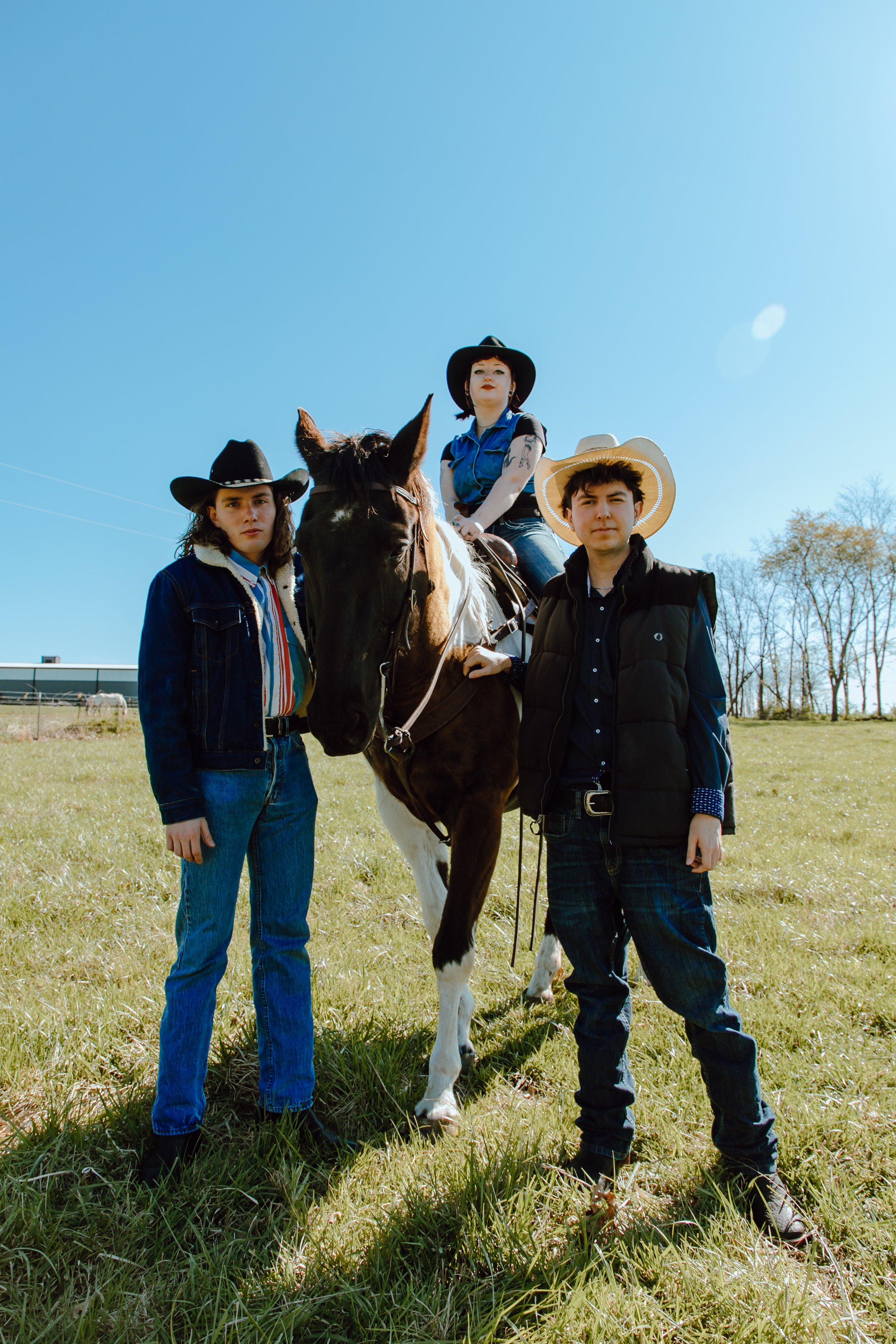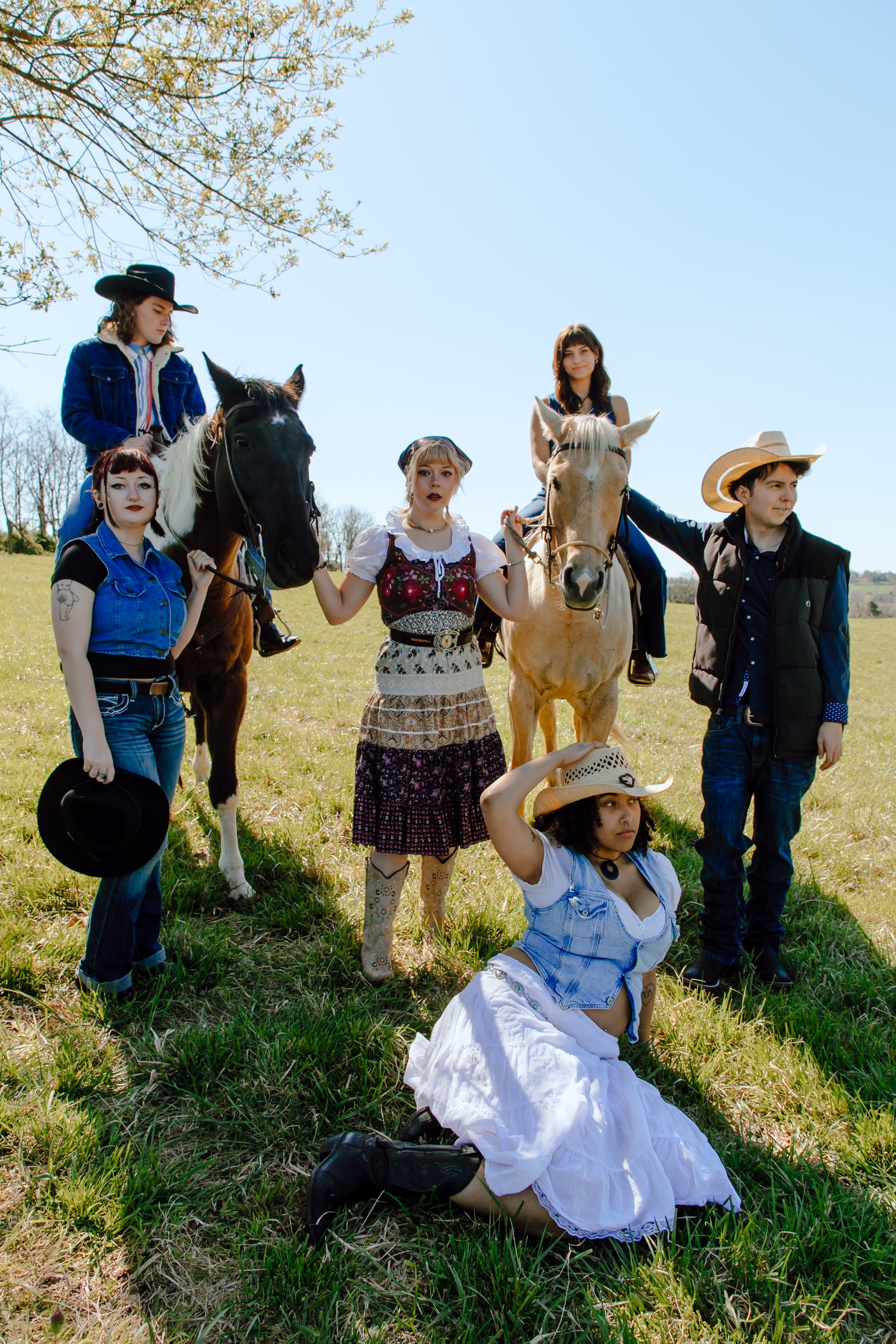Cowpoke Couture: The Resurgence of Western Fashion in Modern Society
Written by Kaitlyn Patton & Ky Williams
Modeled by Ashton Diercks, Cade Johnson, Alexis Loftis, Marko Maturino, Kaitlyn Patton, & Ky Williams
Photography by Mindy Welland
Horses provided by Whitley Farquhar
With the release of albums like Beyoncé’s “Cowboy Carter” and Lana Del Rey’s “Lasso” on the horizon, Gen Z is excited about country music more than ever before. Friends of mine who I never would have imagined donning a Stetson hat are now excitedly chittering about their plans for “cowgirl spring.” Whether they realize it or not, this enthusiasm for cowboy culture is a reclamation of sorts, with young minorities embracing styles that, for decades, have been hallmarks of conservative culture.
To better understand the impact of people of color, queer people, and women adopting this culture, let us look back at its roots. The idea of the “cowboy” originated in the early 16th century in Mexico, when Spanish settlers began building ranches and importing horses. Someone needed to man these ranches, and thus, the vaquero was born! Vaqueros, whose name comes from the Spanish word vaca, or cow, were known for their skills when it came to wrangling, roping and riding. By the 18th century, the practice of ranching had made its way to the American Southwest across states like Texas, New Mexico, Arizona and California. With westward expansion, the practice of ranching expanded across the United States, and the rest is history!
Our image of cowboys today comes mostly from Western films and country stars, but real cowboys came in many shapes and sizes. Many were Black, Indigenous American, or Hispanic, and it was common to find women working the ranches as well. The real cowboys and cowgirls have become somewhat lost in American media, with the idea of Western culture becoming synonymous with white masculinity over the years. However, this new wave of appreciation for Western culture by minorities is changing that.
Popular brands for shoes and clothing have also added to the current "cowboy craze" with brands like Converse and Dr. Martens taking their own spin on Western style. Converse's new "Cowgirl Canvas" line — featuring four new sneakers resembling cowboy boots and embroidered leather — is a prime example of big brands joining in on the trend. Alongside Converse, Dr. martens released their very own “Gothic Americana” line, following this cowpoke craze. Thanks to brands like these and more, the Western aesthetic has become available to all subcategories of fashion. From the alternative, or "y’allternative," groups to the classic period piece styles, a new wave is taking the fashion world by sandstorm.
As technology has advanced and the image of the cowboy has warped, the sight of real cowboys has become rarer, and the clothing once worn for its utility has now become a fashion statement in mainstream media. Although some are quick to lament the loss of the cowboy, they are still out there, and it can be argued that the casual wearing of boots and bandanas by the descendants of those who originated the style is keeping the image of the cowboy alive in today’s culture.








